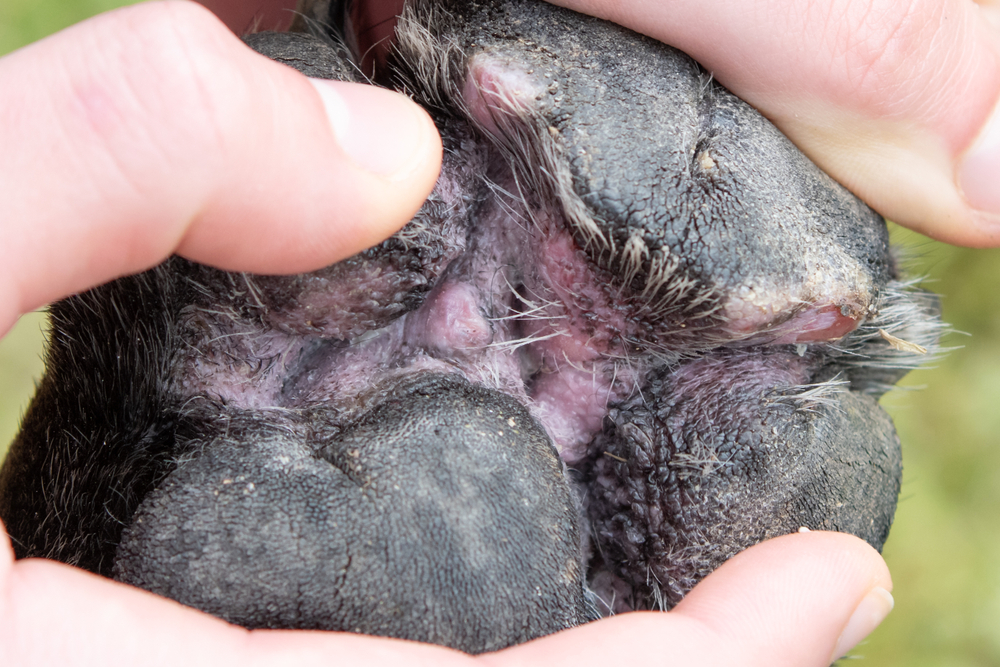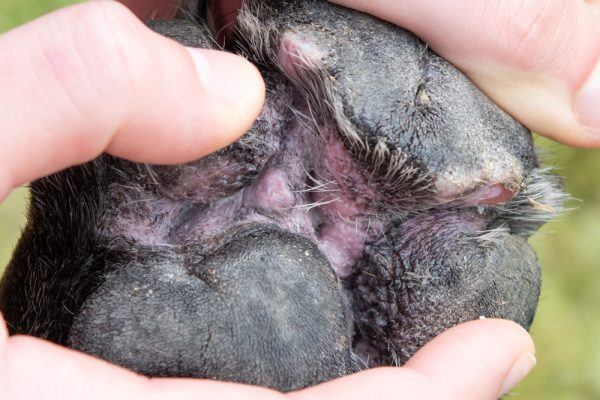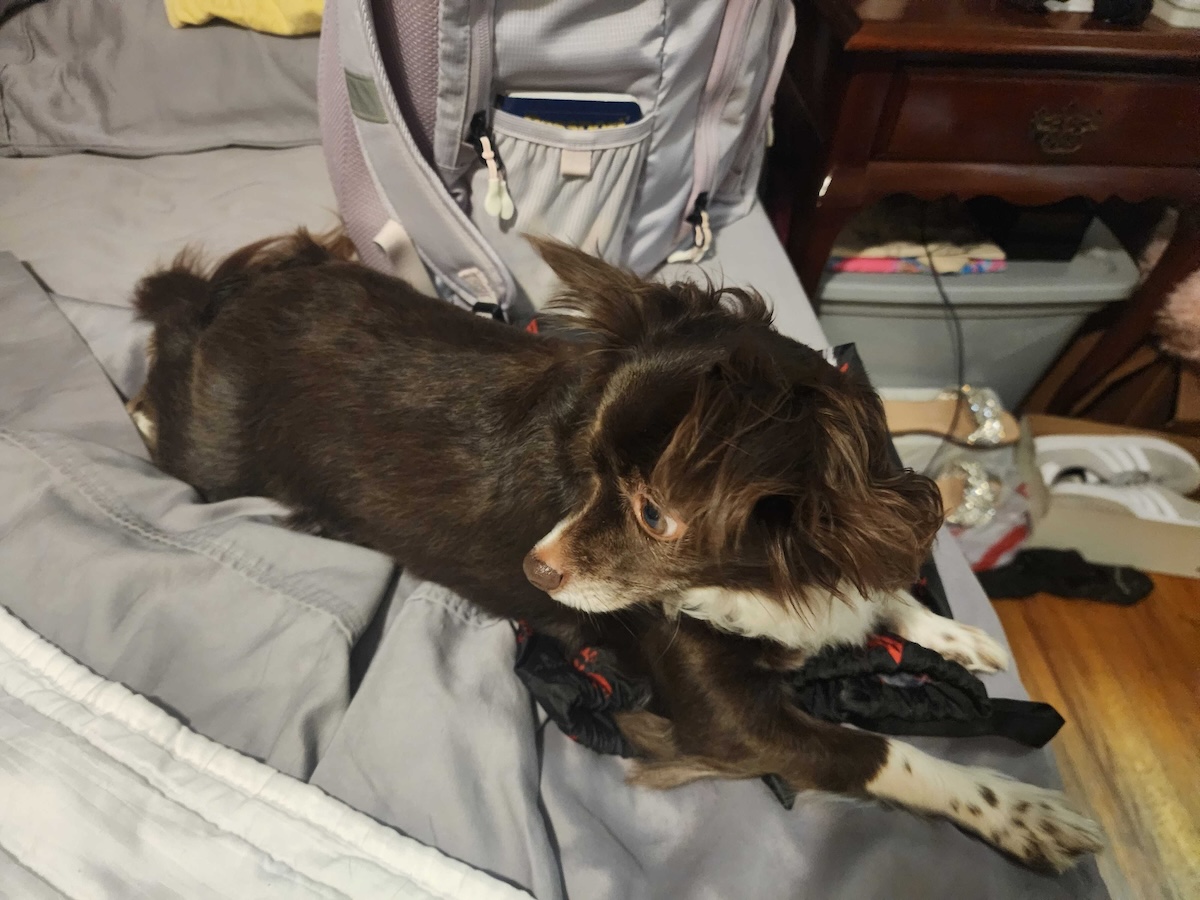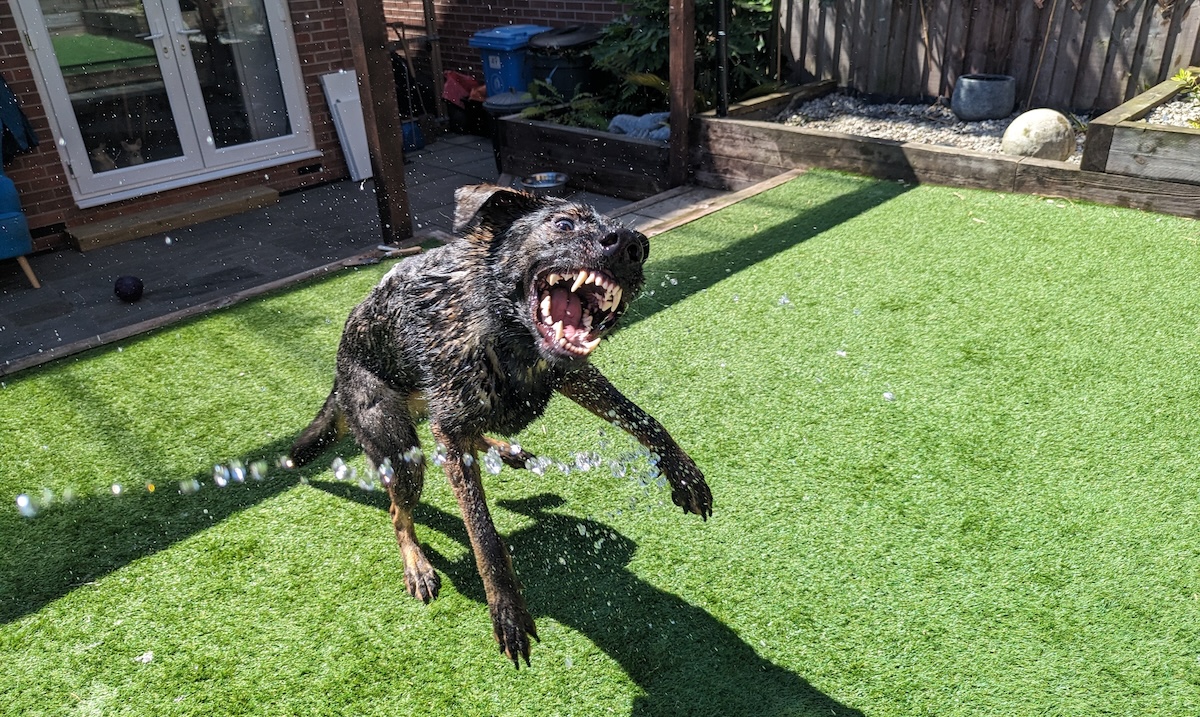Click to Skip Ahead
Have you ever been checking your dog’s feet, trimming their nails, or just admiring their toe floof and suddenly noticed something that shouldn’t be there? Given that our dogs are always on the go, running, jumping, and walking on all sorts of surfaces without the protection of footwear, it’s not unusual for their paw pads to be injured or damaged, but there are also a number of diseases and growths that can affect their little toe beans.
If you’ve spotted something unusual on your dog’s paw pads and want to know if you should be worried, we’re going to help you recognize what’s normal and what’s not. As always, if you are worried that something is wrong or if there is bleeding, pain, swelling, or lameness, your first priority is to contact your vet. Let’s look at the normal and not-so-normal changes and growths you might see on your dog’s paw pads.
Normal Dog Paw Pads
You might think that paw pads are paw pads, but there are some normal variations and changes that are good to be aware of, such as the following.
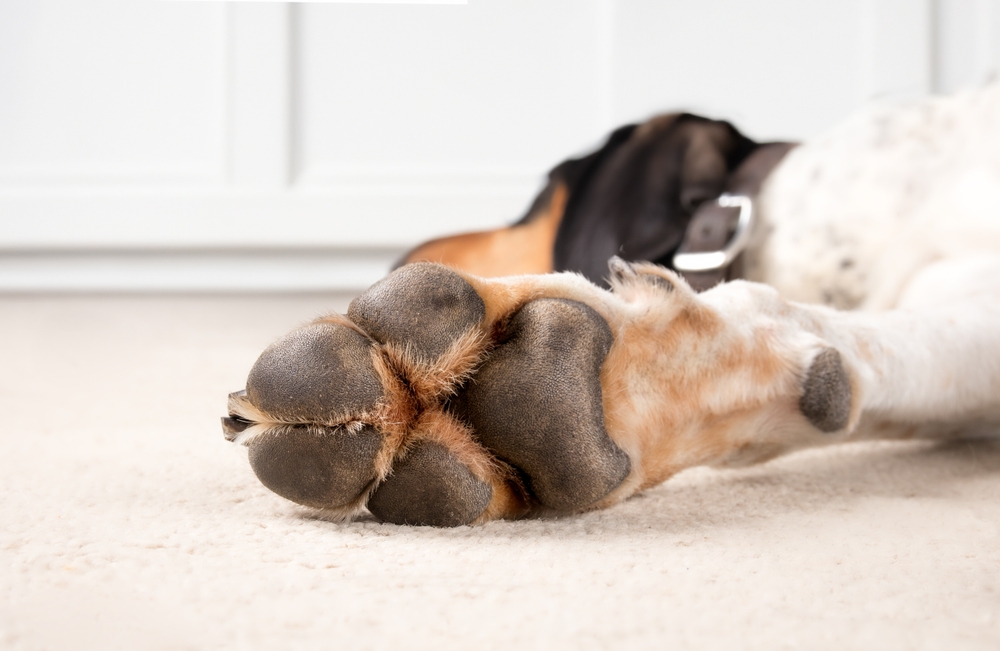
Webbed Toes
Although all dog toes are somewhat webbed when compared to our own, some have more webbing than others. This is relatively common in breeds that have historically been bred and used for retrieving in the water or wetlands, such as the Newfoundland, Labrador Retriever, Standard Poodle, and the Irish and Portuguese Water Spaniels.
Cracked Paw Pads
Dogs that spend a lot of time outside, running on harder surfaces, and just living life in general will usually develop some thickening and cracking of their paw pads, just like how humans that spend a lot of time on their feet or not wearing shoes will often get cracked heels. It is the body’s way of protecting the soft tissue underneath from damage.
In older dogs, this shouldn’t be cause for concern unless your dog seems to be in pain when the area is touched. If your dog is young (under 4 or 5 years) and has particularly thickened and cracked paws, it’s worth having a checkup with your vet to make sure there isn’t a problem, particularly if it is only one or two paws affected, as this could indicate a gait abnormality.
Carpal Pad
You may have spotted an extra pad further up your dog’s front leg but not on their back leg. This pad is called the carpal pad, often referred to as the “stopper pad.” The likely reason that only the front limbs have this pad is that this area is more likely to hit the ground when a dog comes to a sudden stop, so the pad offers extra protection.
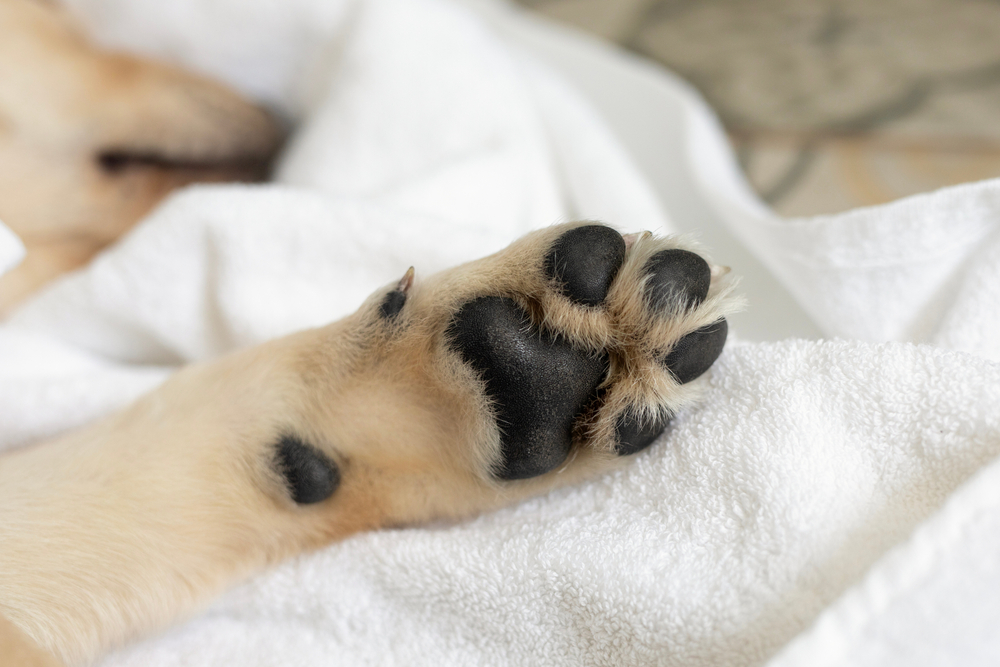
The 4 Common Causes of Abnormal Growths on Dog Paw Pads
Now that we’ve got a better idea of what sort of changes are considered normal on our dog’s paw pads, it’s time to look at some issues that aren’t so normal. These are the most common growths you are likely to encounter, all of which should be checked by your vet.
1. Interdigital Cysts, Folliculitis, and Furunculosis
Cysts, redness, and swelling between the toes can be a sign of infection, contact dermatitis, or a condition called furunculosis, which is deep inflammation of the hair follicles, with or without infection. This condition tends to affect the skin between the toes and paw pads but can cause swelling and lumps to appear on or just beside the paw pads themselves. Some breeds, such as the English Bull Terrier, English Bulldog, Shar Pei, and Labrador, are particularly susceptible to this condition, indicating that there is a genetic component to the disease.
Mild cases can be treated medically, with antibiotics and topical preparations. Severe cases, usually seen in the breeds mentioned above, tend to be chronic and get worse over time. The condition can be managed with a combination of oral medications and topical treatments but is not usually curable.
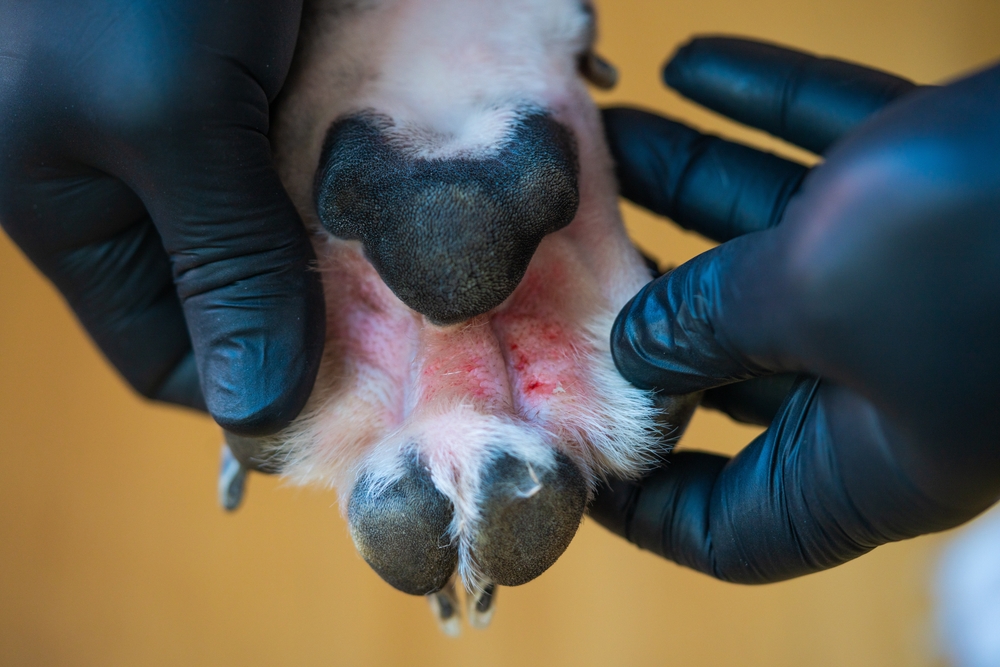
2. Foreign Body
Often confused with cysts, a lump or swelling on or adjacent to the paw pads may be an indication of a foreign object lodged under the skin, or sometimes a deep infection introduced by something that has pierced the skin. Glass or metal are common culprits affecting the underside of the foot and paw pads, while grass seeds like foxtails are a common cause of painful paws and foreign body reaction in the feet of dogs over spring and summer.
These tend to appear quite suddenly and cause dogs significant pain and distress, and they will often chew and lick at the swelling frantically.
3. Hyperkeratosis
Sometimes referred to as “hairy feet,” this condition often affects the nose as well as the paw pads and is called hyperkeratosis. It is caused by an overproduction of the keratin layer of the skin, which can be a response to pressure/trauma or can be part of an inherited condition.
Although it is relatively harmless, hyperkeratosis can lead to the development of painful lesions and should be addressed. Fortunately, most cases can be managed with the use of topical preparations and balms.
4. Tumors
Just like anywhere else on the body, tumors can develop on your dog’s paw pads but are more common on or between the toes. Some of these tumors are benign, while others can be highly malignant and invasive, which is why it is always vital to have a vet check any unusual growths, lumps, or non-healing wounds on your dog’s paws, or anywhere else on their body.
Final Thoughts
It is often easy to overlook our dog’s feet, so it’s a good idea to get down to their level and take a look at their paws every now and then to make sure everything is as it should be. It’s good to be aware of the normal changes and variations you might expect to see, and it’s important to recognize when it’s time to book an appointment with your vet.
Most importantly, if it’s new, painful, bleeding, swollen, or red, it needs immediate attention. After all, dogs have the most fun when they’re running around, and healthy paw pads are a vital part of keeping them on their feet.
Featured Image Credit: JNix, Shutterstock

